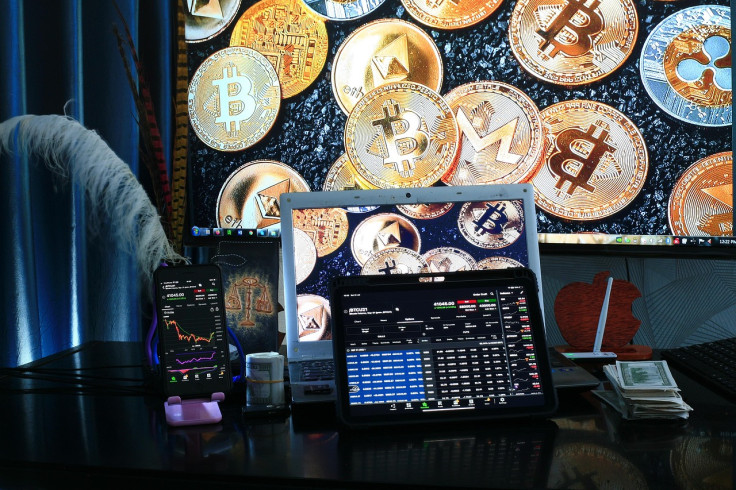Apps for Traders: What Serious Investors Need Beyond a Simple Buy/Sell Interface
Why modern traders need feature-rich mobile platforms to compete in today's fast-moving global markets

Have you ever tried managing a trade while away from your screen? Maybe you spotted a setup during your commute or wanted to exit a position while watching the market shift in real time. That kind of flexibility has become part of how modern trading works.
Markets move fast, and serious traders need tools that can keep up. It's not just about having an app, it's about having the right app. One that actually lets you respond to price action, monitor risk, and stay informed without being tied to a desk.
The best apps for traders now offer far more than just buy and sell buttons. They've evolved into full-featured platforms, giving you access to advanced charting, multi-asset trading, and real-time analytics, all from your phone or tablet.
Trading in Motion - The Rise of Mobile-Centric Strategies
The old model was simple: Analyse charts at home, make your decisions, then walk away. However, as markets globalised and volatility became more common, traders began to need more flexibility. Now, many actively manage their positions during the workday, in transit, or across time zones.
This shift has pushed trading apps into a new category entirely. It's no longer enough to check prices or set alerts. Investors want to analyse trends, test setups, and manage risk wherever they are, without losing clarity or control.
The best apps today aren't just lightweight versions of a full platform. They are fully-fledged trading terminals, reimagined for mobile use.
What Traders Actually Need from a Mobile Platform
There's a clear distinction between casual users and serious traders when it comes to mobile features. Basic apps might cover watchlists, simple charting, and basic order placement. That's fine if you're dabbling, but if you're working with real capital and trying to stay competitive, you'll need more.
At a minimum, active traders tend to look for:
- Multi-timeframe charting with technical indicators
- Economic calendar integration and real-time news feeds
- Risk calculation tools to manage position sizing on the fly
- Fast execution with low latency and high reliability
- Customisable alerts, syncing across platforms
- Secure login, data encryption, and broker integration
Not every app delivers this level of performance. That's why it's important to find tools that are built with real-world trading in mind.
The Tech Behind Mobile Execution Matters
As mobile trading becomes standard, not all apps are keeping pace. Some still limit advanced features or delay data, which can affect timing and trade decisions. Traders need tools that perform consistently, especially when markets are volatile or opportunities are short-lived.
That's why many now prefer platforms that are purpose-built for speed, functionality, and multi-asset access. Providers like ThinkMarkets have focused on delivering mobile experiences that support real-time execution, technical charting, and flexible order control, all from the same interface.
It's this kind of infrastructure that helps traders stay active, even when they're not at their desks. Whether you're watching economic releases, adjusting stops, or planning an entry on the go, the right tech setup can make it seamless.
Mobility Isn't a Compromise
For a while, there was a trade-off: Use desktop for precision, mobile for convenience. But now, those lines are starting to disappear. In many cases, mobile apps outperform older desktop interfaces, especially when they've been built from the ground up for multi-device workflows.
Today's mobile trading environment is about integration. Your phone, tablet, and desktop should work together, keeping you synced and aware no matter where you are. The best platforms support one-tap login across devices, making it easy to start a trade on one screen and monitor or exit on another, without friction or lag.
This is particularly useful for traders who operate across time zones or follow overnight price action in global markets. Instead of logging in to find missed alerts or outdated charts, everything stays live and updated, so your decisions remain current.
Risk Management on the Go
Fast markets come with fast risks. If you're only focused on order placement, it's easy to overlook risk exposure, especially during periods of high volatility.
That's why the best mobile trading apps now include integrated risk management features. Rather than relying on third-party calculators or desktop tools, you can size your positions based on pip value, account equity, or volatility, directly from the app.
Being able to make those adjustments on the fly keeps your risk aligned with your strategy, even if you're away from your desk. That's essential if you're placing multiple trades or reacting to fast-changing conditions.
Charting Tools That Actually Work on Mobile
Not all charting tools are created equal. Many mobile apps still offer simplified versions of indicators, or they limit you to a narrow set of chart types. That's fine for watching trends, but it's not good enough for making decisions.
Apps built specifically for technical traders let you access a wide range of indicators, draw custom lines, set Fibonacci levels, and toggle between multiple timeframes without losing responsiveness.
What's more, everything is designed to be usable on a smaller screen. Zoom, scroll, and object placement all respond smoothly, making it easy to analyse and adjust in real time.
If you're trading breakouts, watching for moving average crossovers, or following trend continuation setups, these tools help you react fast, without having to wait until you're back at your laptop.
Not Just for Forex
One of the biggest misconceptions about trading apps is that they only cater to one type of asset, usually forex. But traders today are working across a much wider range of instruments, often within the same account.
Apps that support multi-asset trading, including stocks, indices, commodities, and cryptocurrencies via CFDs, give traders the ability to diversify, hedge, and shift strategies based on changing conditions.
That flexibility is key in 2025, especially with rising interest in global events, inflation trends, and geopolitical catalysts. Having access to the full picture, within one app, allows you to respond strategically rather than emotionally.
Apps Are Part of the Edge Now
Technology has always played a role in trading, but it's becoming more personal. Your tools now follow you across devices, time zones, and strategies. That changes how you manage your day, your risk, and your performance.
Where desktop tools once provided the edge, apps are now part of that same conversation. They're not there to replace core trading principles, but to support them, making your setup more flexible, your decisions faster, and your outcomes more consistent.
© Copyright IBTimes 2025. All rights reserved.

















